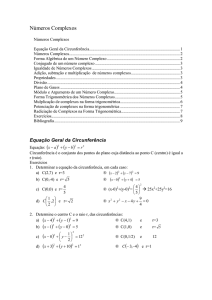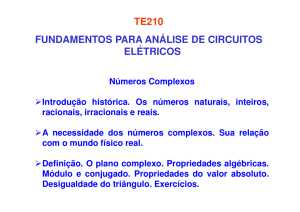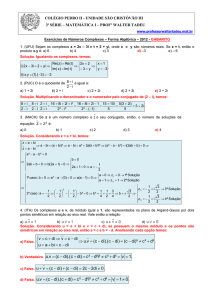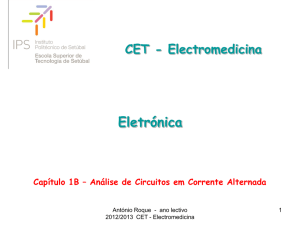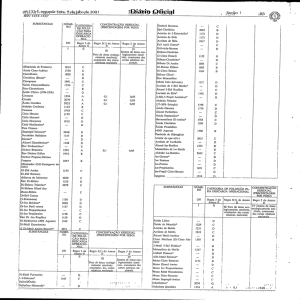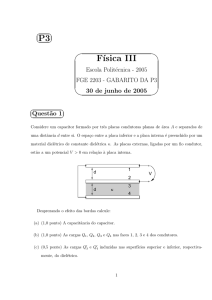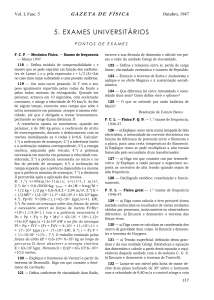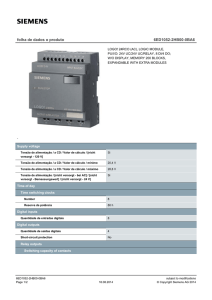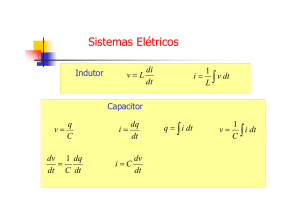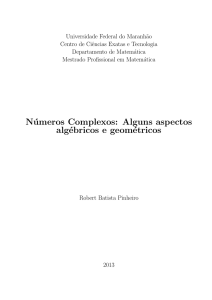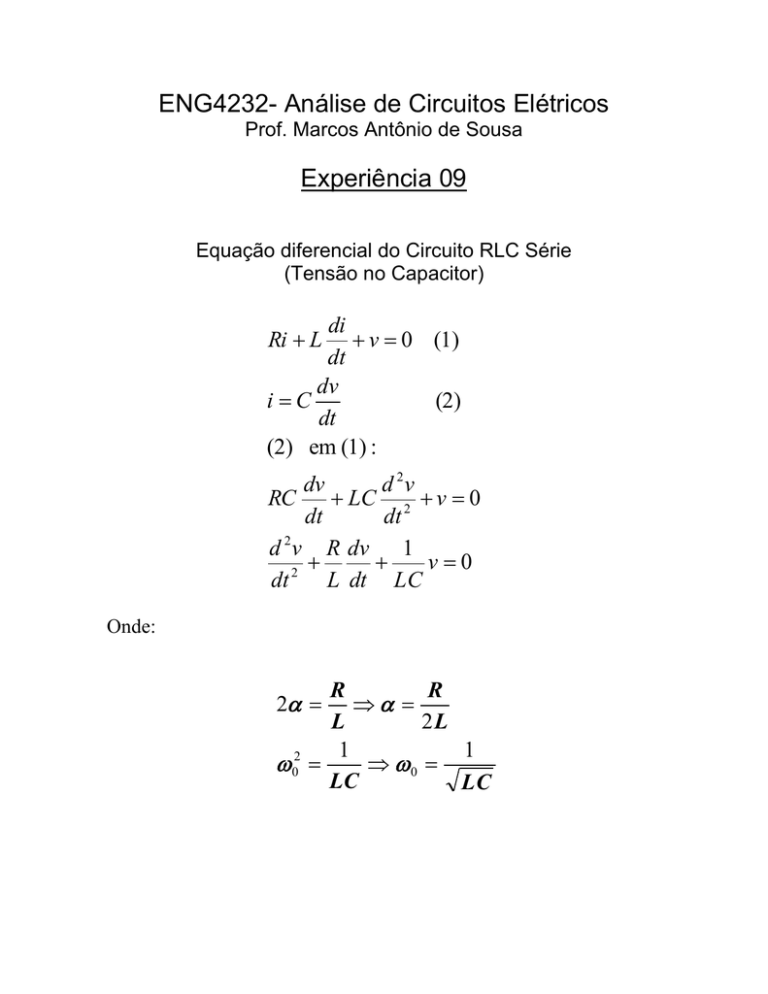
ENG4232- Análise de Circuitos Elétricos
Prof. Marcos Antônio de Sousa
Experiência 09
Equação diferencial do Circuito RLC Série
(Tensão no Capacitor)
di
v 0 (1)
dt
dv
iC
(2)
dt
(2) em (1) :
Ri L
dv
d 2v
RC
LC 2 v 0
dt
dt
d 2 v R dv 1
v0
2
dt
L dt LC
Onde:
R
R
L
2L
1
1
02
0
LC
LC
2
CIRCUITO SUPER-AMORTECIDO
R 6Ω
L 1H
C 1/5 F
Coeficiente de Amortecimento
Frequência Natural (de Ressonância)
0
R
2L
1
4L
C 2
R
LC
3 Np / s
s1 3 32 5 s1 1
0 5 rad / s
s2 3 32 5 s2 5
Solução v(t):
v (t ) Ae s1t Be s2t (V)
v (t ) Ae t Be 5t (V)
Determinação das Constantes A e B:
dv
Ae t 5 Be 5t
dt
v(0) A B 8 A 8 - B
dv
i( 0 )
A 5B
45
dt t 0
C
(3) em (4) :
- 8 B - 5B 20 B -7 e A 15
Portanto:
v (t ) 15e t 7e 5t (V)
i (t ) C
dv
dt
1
15e t 35e 5t
5
i(t) 7e 5t 3e t (A)
i(t)
Cálculo da Corrente
de malha i(t)
CIRCUITO COM AMORTECIMENTO CRÍTICO
R 6Ω
L 1H
C 1/9 F
Coeficiente de Amortecimento
Frequência Natural (de Ressonância)
0
R
2L
1
4L
C 2
R
LC
3 Np / s
s1 3 32 9 s1 3
0 9 rad / s
s2 3 32 9 s2 3
Solução v(t):
v(t ) Aes1t Bte s1t
(V)
v(t ) Ae3t Bte 3t (V)
Determinação das Constantes A e B:
dv
3 Ae3t Be 3t 3Bte 3t
dt
v(0) A B.0 8 A 8
dv
i( 0 )
3 A B 0
49
dt t 0
C
B 36 3 8 B 60
Portanto:
v (t ) 8e 3t 60te 3t (V)
v (t ) (8 60t )e 3t
(V)
i (t ) C
1
24e 3t 60e 3t 3 60te 3t
9
1
i(t) 36e 3t 180te 3t
9
i(t) 4e 3t 20te 3t
i(t)
Cálculo da Corrente
de malha i(t)
dv
dt
i(t) (4 20t )e 3t
(A)
CIRCUITO SUB-AMORTECIDO
R 6Ω
L 1H
C 1/34 F
Coeficiente de Amortecimento
Frequência Natural (de Ressonância)
R
1
4L
0
C 2
2L
R
LC
3 Np / s
s1 3 32 34 s1 3 j 5
0 34 rad / s
s2 3 32 34 s2 3 j 5
Solução v(t):
v (t ) e .t A cos( wd .t ) B sen( wd .t ) (V)
v (t ) e 3.t A cos(5t ) B sen( 5t )
(V)
Determinação das Constantes A e B:
dv
3 Ae 3.t cos(5t ) 5 Ae 3.t sen( 5t ) 3Be 3.t sen( 5t ) 5Be 3.t cos(5t )
dt
v(0) A B 0 8 A 8
dv
i (0)
3 A 5 B
4 34
dt t 0
C
5 B 136 24 160 B 32
Portanto:
v (t ) e 3.t 8 cos(5t ) 32 sen( 5t )
(V)
Cálculo da Corrente de Malha i(t):
i (t ) C
dv
dt
1
24e 3t cos(5t ) 40e 3t sen( 5t ) 3 32e 3t sen( 5t ) 160e 3t cos(5t )
34
1
i(t)
136e 3t cos(5t ) 136e 3t sen( 5t )
34
i(t) 4e 3t cos(5t ) sen( 5t )
(A)
i(t)
FÓRMULA DE EULER (“OILER”)
e j cos j sen
e j cos j sen
Solução v(t ) :
v(t ) Ae jwd .t Be jwd .t
v(t ) Ae .t e jwd .t Be .t e jwd .t
onde : wd 02 2
Aplicando Euler :
v(t ) e .t Ae jwd .t Be jwd .t
v(t ) e .t Acos wd .t j sen wd .t Bcos wd .t j sen wd .t
v(t ) e .t A B cos wd .t Aj Bj sen wd .t
Fazendo :
A B K1
Aj Bj K 2
v(t ) e .t K1 cos wd .t K 2 sen wd .t (V)
Ou :
v(t ) e .t A cos( wd .t )
onde :
A K12 K 22
K2
K
2
tg 1
(V)

